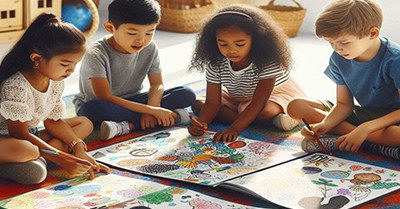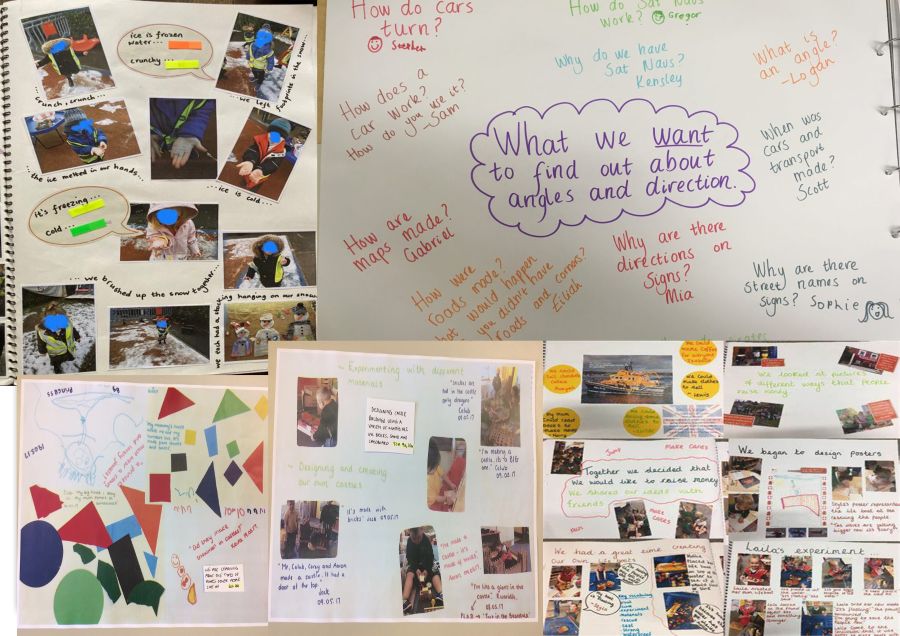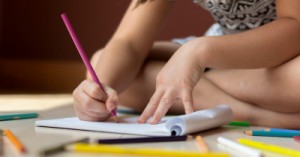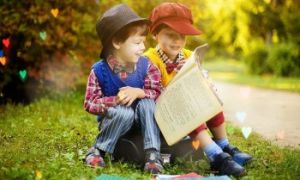Floor books are an engaging and interactive method of recording and reflecting on children’s learning experiences in early childhood settings. The following article provides information on How To Start Floor Books, How To Document Ongoing Learning In Floor Books, Concept Ideas For Floor Books, Entries Examples For Floor Books, How To Review And Reflect Using Floor Books, How Children Can Use Floor Books and more.
How To Start Floor Books
-
Choose the Right Floor Book: Select a large, blank book that offers plenty of space for drawings, writings, and photos.
-
Gather Your Resources: Collect markers, stickers, glue, photos, and other materials to encourage children to express themselves creatively.
-
Introduce the Concept: Explain to the children what a floor book is and how they can use it to capture their ideas, experiences, and learning.
-
Involve the Children: Sit on the floor with the children and encourage them to share their thoughts, draw pictures, or dictate their stories while you write them down. Include their voices, drawings, and photos.
-
Encourage Collaboration: Let children work together on the floor book, discuss their ideas, and learn from each other. This promotes shared thinking and collaborative learning.
-
Document Ongoing Learning: Regularly add new entries to the floor book related to current projects, themes, or spontaneous interests. This helps track their development and learning over time.
-
Review and Reflect: Periodically go through the floor book with the children, reflect on their progress, and celebrate their achievements.
How To Document Ongoing Learning In Floor Books
-
Regular Updates: Encourage children to regularly add drawings, writings, photos, and other materials related to their learning experiences. This ensures that the floor book is a living document that evolves over time.
-
Observation Notes: Take detailed notes during activities and interactions. Include these notes in the floor book to provide context and insights into the children's learning processes.
-
Learning Stories: Write narrative-style entries that describe specific learning experiences, highlighting the context, actions, and outcomes. These stories can be complemented with children's artwork or photos.
-
Use Templates: Create templates for different types of entries, such as "What We Learned Today" or "Our Nature Discoveries." This can help organize the content and make it easier to update the floor book regularly.
-
Encourage Participation: Involve children in the documentation process. Let them take photos, draw, or dictate their thoughts. This empowers them and makes the process more engaging.
-
Reflection Sections: Dedicate sections of the floor book to reflection. Encourage children to look back at their entries and discuss what they have learned, how they felt, and what they want to explore next.
-
Thematic Pages: Create pages based on themes or projects the children are working on. This helps to organize the content and provides a clear structure to the floor book.
-
Parental Involvement: Invite parents to contribute to the floor book by adding photos, stories, or comments about their child's learning experiences at home. This provides a more holistic view of the child's development.
By incorporating these strategies, you can create a comprehensive and engaging record of children's ongoing learning in your floor books. What theme are you planning to start with for your floor book?
Concept Ideas For Floor Books
Floor books can be centered on a variety of inspiring concepts to engage young children in meaningful learning experiences. Here are some ideas to get you started:
-
Seasonal Changes: Document the changes in seasons and how they affect the environment. Encourage children to draw and write about their observations.
-
Cultural Celebrations: Reflect on different cultural festivals and traditions. Involve families and community members to share their stories and traditions.
-
Nature Explorations: Record findings from nature walks, including drawings of plants, animals, and natural phenomena children encounter.
-
Community Connections: Explore the local community, documenting visits to parks, libraries, or other community spaces, and reflect on children's experiences.
-
Science Discoveries: Focus on simple science experiments or discoveries. Children can record their hypotheses, observations, and results.
-
Artistic Expressions: Include children’s artwork, sculptures, or craft projects. Encourage them to explain their creations and the inspiration behind them.
-
Stories and Imagination: Capture children’s stories, poems, or imaginative play experiences. This helps in promoting language development and creativity.
These concepts provide a wonderful foundation for creating inclusive and engaging floor books that support children's learning and development. If you need more detailed ideas or help to get started on a specific concept, let me know!
Entries Examples For Floor Books
Here are some examples of floor book entries to guide you in documenting various learning experiences:
Entry: Nature Walk Exploration
Date: 15th February 2025 Theme: Exploring Nature
Children's Observations:
-
Drawings: Children drew pictures of leaves, insects, and flowers they saw.
-
Description: David said, "The butterfly is very colorful," and drew a butterfly.
-
Photos: We included photos of children collecting leaves and examining insects with magnifying glasses.
Reflection:
-
Children's Quotes: Ava mentioned, "The leaves feel crunchy and some are soft."
-
Learning Outcome: The children learned about different textures and colors found in nature.
Entry: Celebrating Diwali
Date: 4th November 2024 Theme: Cultural Celebrations
Children's Activities:
-
Crafts: Children made Diwali lanterns using colored paper and glitter.
-
Storytime: We read a story about Diwali traditions.
-
Photos: A photograph of children lighting diyas (lamps).
Reflection:
-
Children's Quotes: Mira said, “My family lights diyas during Diwali!”
-
Learning Outcome: The children learned about cultural diversity and traditional celebrations.
Entry: Simple Science Experiment
Date: 10th March 2025 Theme: Science Discoveries
Experiment: Mixing Colors
Steps:
-
Children mixed primary colors in cups of water.
-
Observed changes and documented the new colors created.
Children's Observations:
-
Quotes: Alex exclaimed, "Red and blue make purple!"
-
Drawings: Included drawings of mixed color outcomes.
Reflection:
-
Learning Outcome: The children learned about color theory and scientific observation.
Entry: Seasonal Changes - Autumn
Date: 20th October 2024 Theme: Observing Autumn
Children's Observations:
-
Artwork: Children painted trees with orange and yellow leaves.
-
Photos: Nature walks exploring fallen leaves.
-
Descriptions: "The air feels cooler and the leaves are falling."
Reflection:
-
Children's Quotes: "I like to jump in the leaves," said Sarah.
-
Learning Outcome: The children observed seasonal changes and developed an understanding of the autumn season.
These examples should give you a good starting point for creating meaningful and engaging entries in your floor books. By integrating drawings, quotes, photos, and reflections, you can capture a holistic view of children's learning experiences.
How To Review And Reflect Using Floor Books
Reviewing and reflecting using floor books is an invaluable way to celebrate children's progress, understand their learning processes, and plan future activities. Here's a step-by-step guide to help you make the most of this process:
-
Scheduled Reflection Time: Set aside regular times to review the floor book entries with the children. This could be at the end of the week or after completing a particular project.
-
Encourage Children’s Voices: Invite children to share their thoughts on their entries. Ask open-ended questions like:
-
"What did you enjoy most about this activity?"
-
"What did you learn from this experience?"
-
"How did you feel when you were doing this?"
-
-
Highlight Key Learning Moments: Identify and discuss significant learning moments captured in the floor book. Recognize new skills, concepts understood, and personal achievements.
-
Use Visual Aids: Utilize photos, drawings, and other visual aids to enhance reflection. Children often respond well to visual prompts, and it helps them recall details of their learning journey.
-
Document Reflections: Record children’s reflections and your observations in the floor book. This creates a continuous narrative of their learning and development.
-
Collaborate With Colleagues: Discuss the floor book entries with fellow educators to gather different perspectives and ideas for future activities.
-
Plan Future Activities: Use the insights gained from the reflections to plan future activities that build on the children’s interests and extend their learning. Including the children in this planning process can make it more engaging for them.
-
Celebrate Progress: Celebrate and acknowledge children's progress and achievements. This boosts their confidence and encourages them to take pride in their learning.
By regularly reviewing and reflecting on the entries in your floor books, you create a rich record of children’s learning journeys and foster a culture of continuous improvement and celebration of their achievements.
How Children Can Use Floor Books
-
Recording Ideas and Experiences: Children can draw pictures, write or dictate their ideas, and add photos or other materials that reflect their learning experiences.
-
Sharing Stories and Thoughts: Floor books provide a space for children to share their stories, thoughts, and experiences with peers and educators, promoting communication and social skills.
-
Encouraging Collaboration: By contributing to a shared floor book, children learn to collaborate, discuss, and build on each other's ideas. This fosters a sense of community and teamwork.
-
Reflecting on Learning: Reviewing the floor book helps children to reflect on their learning journey, recognize their progress, and celebrate their achievements.
-
Engaging in Hands-On Activities: Children can engage in hands-on activities, such as drawing, coloring, and pasting, which enhances their fine motor skills and creativity.
-
Learning Through Play: Floor books integrate play into learning, making the process enjoyable and meaningful for children.








 Here is the list of the EYLF Learning Outcomes that you can use as a guide or reference for your documentation and planning. The EYLF
Here is the list of the EYLF Learning Outcomes that you can use as a guide or reference for your documentation and planning. The EYLF The EYLF is a guide which consists of Principles, Practices and 5 main Learning Outcomes along with each of their sub outcomes, based on identity,
The EYLF is a guide which consists of Principles, Practices and 5 main Learning Outcomes along with each of their sub outcomes, based on identity, This is a guide on How to Write a Learning Story. It provides information on What Is A Learning Story, Writing A Learning Story, Sample
This is a guide on How to Write a Learning Story. It provides information on What Is A Learning Story, Writing A Learning Story, Sample One of the most important types of documentation methods that educators needs to be familiar with are “observations”. Observations are crucial for all early childhood
One of the most important types of documentation methods that educators needs to be familiar with are “observations”. Observations are crucial for all early childhood To support children achieve learning outcomes from the EYLF Framework, the following list gives educators examples of how to promote children's learning in each individual
To support children achieve learning outcomes from the EYLF Framework, the following list gives educators examples of how to promote children's learning in each individual Reflective practice is learning from everyday situations and issues and concerns that arise which form part of our daily routine while working in an early
Reflective practice is learning from everyday situations and issues and concerns that arise which form part of our daily routine while working in an early Within Australia, Programming and Planning is reflected and supported by the Early Years Learning Framework. Educators within early childhood settings, use the EYLF to guide
Within Australia, Programming and Planning is reflected and supported by the Early Years Learning Framework. Educators within early childhood settings, use the EYLF to guide When observing children, it's important that we use a range of different observation methods from running records, learning stories to photographs and work samples. Using
When observing children, it's important that we use a range of different observation methods from running records, learning stories to photographs and work samples. Using This is a guide for educators on what to observe under each sub learning outcome from the EYLF Framework, when a child is engaged in
This is a guide for educators on what to observe under each sub learning outcome from the EYLF Framework, when a child is engaged in The Early Years Learning Framework describes the curriculum as “all the interactions, experiences, activities, routines and events, planned and unplanned, that occur in an environment
The Early Years Learning Framework describes the curriculum as “all the interactions, experiences, activities, routines and events, planned and unplanned, that occur in an environment


